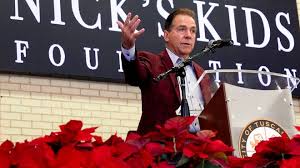The New York Rangers find themselves at a crucial crossroads as the organization looks to solidify its future while keeping its championship aspirations alive. With Artemi Panarin’s time on Broadway potentially nearing an end, the Rangers’ front office has been forced to think ahead and identify a viable replacement capable of carrying the offensive load and maintaining the team’s competitive edge in the Eastern Conference. One name that has recently emerged as a prime target is an impending \$50 million free agent, a player who could bring star power, elite scoring ability, and a fresh spark to a team that is seeking to evolve while staying in the Stanley Cup conversation. For the Rangers, the upcoming offseason is shaping up to be one of the most critical in years, as they must decide not only how to handle Panarin’s future but also how to fill the potential void left by one of their most dynamic forwards.
Panarin has been the engine of the Rangers’ offense since signing his blockbuster contract in 2019. His playmaking vision, silky hands, and ability to produce in clutch moments have made him a fan favorite and a vital piece of the Rangers’ identity. However, as Panarin ages and his contract continues to carry a significant cap hit, the front office is beginning to consider whether moving on and redistributing those financial resources would be a smarter long-term strategy. In today’s NHL, where cap management often separates contenders from pretenders, it is not uncommon for teams to part ways with star players earlier than expected in order to remain flexible. If the Rangers do indeed decide that Panarin’s time is up, then securing a player with the potential to match or even exceed his production becomes a non-negotiable priority.
The rumored \$50 million free agent target checks all the boxes for what the Rangers need in a post-Panarin era. This player, entering the prime years of his career, has already proven that he can be a game-changer. He combines high-end skill with relentless work ethic and has a scoring touch that rivals some of the league’s best wingers. For a team like the Rangers, which relies heavily on star power to drive results, bringing in someone of his caliber would not only soften the blow of losing Panarin but might also elevate the entire roster. The prospect of pairing this free agent with Mika Zibanejad or Chris Kreider could create one of the most dangerous top lines in the league, while also providing depth and flexibility across all forward lines.
Another factor that makes this impending free agent an ideal target is his track record of success in high-pressure situations. The Rangers are not in the middle of a rebuild—they are a team built to win now, and any acquisition must align with that timeline. Over the past few seasons, this free agent has consistently delivered during playoff runs, showing both the skill and mental toughness required to perform when the stakes are highest. In a market like New York, where expectations are sky-high and the pressure from fans and media is relentless, having a player who thrives under the spotlight is critical. The Rangers need a player who can take over games and provide leadership both on and off the ice, and this free agent has demonstrated those qualities throughout his career.
Financially, the Rangers will have to be strategic in how they approach this move. With a \$50 million price tag, the team will need to navigate the salary cap carefully, potentially making additional moves to free up space. This could include parting ways with other veterans or exploring trades for players with expiring contracts. However, the investment would be worth it if it means keeping the Rangers in contention for years to come. The front office has shown a willingness to spend when the opportunity is right, as evidenced by their aggressive free-agent signings and trade acquisitions in recent years. If they believe this player can be the centerpiece of their offense alongside Zibanejad, Adam Fox, and Igor Shesterkin, then the financial commitment becomes less of a concern and more of a necessary step toward building a championship roster.
Replacing a player like Panarin is no easy task. He has been the heart and soul of the Rangers’ offense, and his departure—if it happens—will leave a significant gap both on the scoresheet and in the locker room. However, hockey is a business, and the Rangers’ goal is to remain competitive for as long as possible. By targeting a younger, equally skilled free agent, the team can transition seamlessly into the next phase of its competitive window. The key will be ensuring that the new player not only brings offensive firepower but also complements the existing core of the team. Chemistry on and off the ice will be vital, and the Rangers will need to do their due diligence to ensure that the free agent they pursue fits their system and culture.
The Rangers’ core is already one of the most talented in the NHL, boasting elite players at nearly every position. Adam Fox is among the league’s best defensemen, Igor Shesterkin is a Vezina-winning goaltender capable of stealing games on his own, and the forward group—led by Zibanejad and Kreider—has the skill to compete with any team in the league. Adding a \$50 million free agent to this mix would only strengthen the Rangers’ position as a legitimate Stanley Cup contender. It would also send a strong message to the rest of the league that the Rangers are not content with simply being a playoff team—they are going all in to win it all.
Timing will play a crucial role in how the Rangers approach this situation. If they wait too long to make a move on Panarin, they risk losing leverage in potential trade discussions or failing to secure their top free-agent target. On the other hand, acting too quickly could backfire if the free-agent market evolves unexpectedly or if Panarin rebounds to elite form. Balancing these factors will require careful planning and decisive action from general manager Chris Drury and his staff. They must evaluate Panarin’s performance, the development of their young prospects, and the landscape of the free-agent market to determine the best course of action.
The Rangers also have to consider the impact on their fan base. Panarin has been one of the most beloved players since arriving in New York, and any move involving him would need to be communicated carefully to avoid backlash. Fans want to see the team succeed, but they also develop strong emotional connections to star players. Bringing in a marquee free agent would help ease the transition by giving fans a new superstar to rally behind, but it won’t completely erase the sting of losing Panarin. The Rangers will need to ensure that their moves are framed as part of a broader vision aimed at building a long-term winner, rather than simply making changes for the sake of change.
From a strategic standpoint, targeting a high-caliber free agent now could also help the Rangers take advantage of a relatively open championship window. With teams like the Tampa Bay Lightning and Boston Bruins potentially entering transitional phases and other Eastern Conference powerhouses facing cap challenges, the Rangers have an opportunity to position themselves as the team to beat. By adding another elite forward to their roster, they can exploit this window and potentially dominate the conference for the next few seasons. The NHL is as competitive as it has ever been, and the margin between winning and losing is razor thin. A single move—such as signing a \$50 million free agent—could be the difference between falling short and hoisting the Stanley Cup.
As the offseason approaches, the Rangers’ plans will become clearer, but one thing is certain: standing pat is not an option. If Panarin’s time with the team is truly coming to an end, then securing a replacement of equal or greater value must be the top priority. The rumored \$50 million free agent fits the mold of what the Rangers need: a dynamic scorer, a proven leader, and a player entering his prime. The combination of skill, age, and experience makes him a perfect target for a team looking to sustain its success and take the next step toward a championship.
Ultimately, the Rangers’ pursuit of this free agent will come down to ambition. Are they willing to make bold moves to ensure they remain a powerhouse in the NHL? If history is any indication, the answer is yes. This is an organization with a track record of going after big names and making splashy moves when the time is right. Signing a \$50 million superstar would not only address the immediate need to replace Panarin but also set the Rangers up for sustained success well into the future. With a roster built to win and a fan base hungry for a Stanley Cup, the Rangers have every reason to go all-in on this opportunity.



